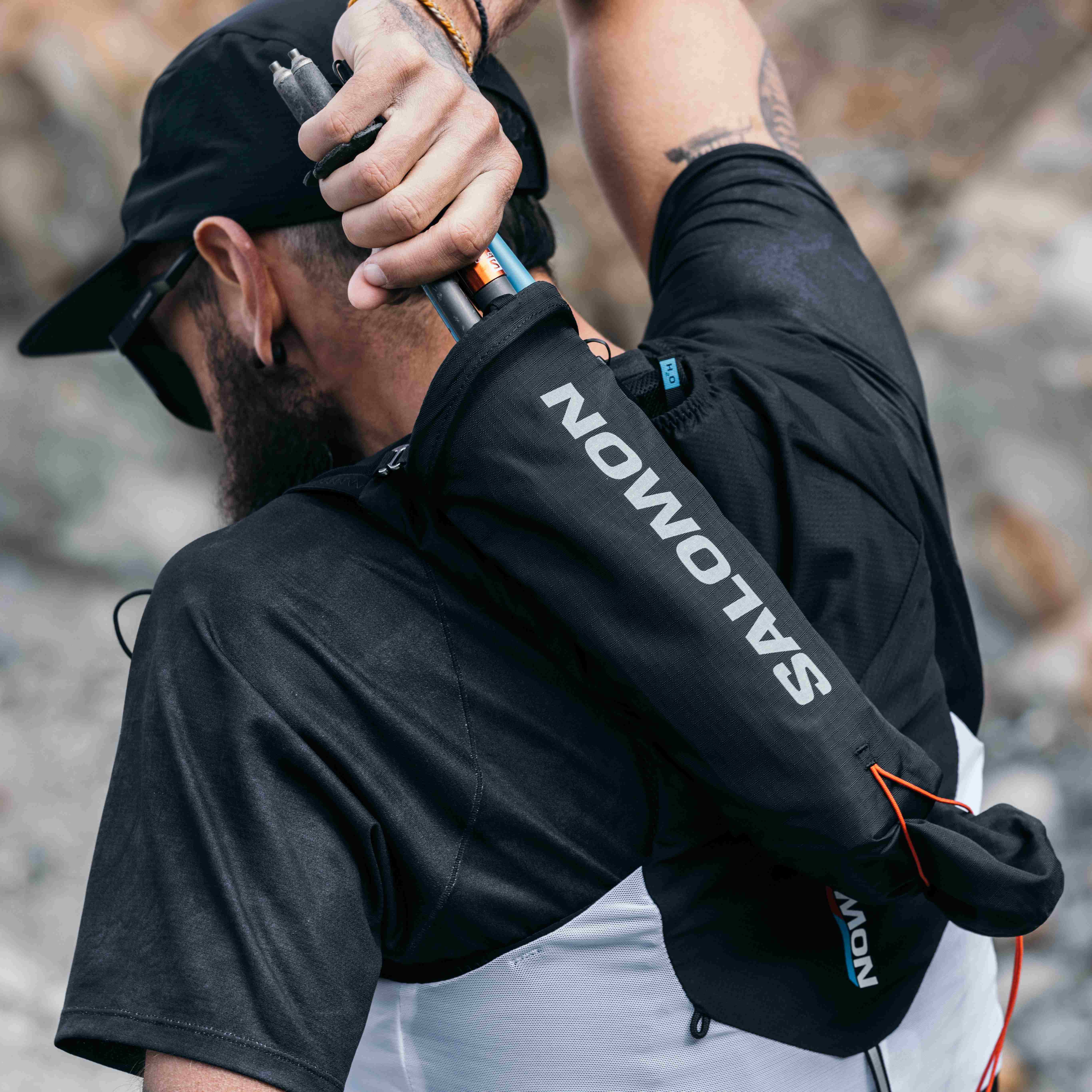So, you’ve found the right trail running shoes and chosen your trail running pack, now you just have to decide what to put in it. Try not to fill it to the brim, and follow our advice to learn what gear you need to carry. The aim is to run light, the lighter the better!
Preparing for a race
Certain races will have a mandatory gear list. Follow it to the letter in order to optimize the weight of each piece of kit. Once you’ve got all the mandatory equipment packed, step back and think about the conditions and what you are used to running with to add any extra gear.
If there isn’t a kit list for the race or if you’re doing a training run, determine what you might take with you to keep you safe. For many trail runs and races, it is important that you be self-sufficient! It is also important to check the weather forecast and anticipate the length of the run and how isolated it is.
To start with, here is a list of a few essentials to put in your backpack:
Pack the items you know you will need often into the easily accessible pockets and pack the emergency items at the bottom of the pack. This helps to maximize your efficiency during a race by not having to remove your pack as often.
Taking on food and water while trail running
The amount of water you drink is really important when trail running. Hydration is key.
Our advice: take two 500ml flasks attached to your straps, and when it’s really hot, you might want to add an extra bladder. Decide whether to take water or an energy drink. Do a test in training to help you figure out how much you typically drink, but a flask of each is often a good compromise.
As for food, use your trail running pack pockets that you can easily access while running. The longer your race is, the more food you will need. Practice eating during training in order to get your stomach used to digesting food while running. Practicing with different types of foods will help you determine what you like and don’t like.
The amount of food you take with you will be dependant on the number of aid stations that are available and how far apart they are.
I prefer to keep the things I am least likely to use in the back and keep the things I use frequently in the front of the pack so they are easily accessible. When you are packing your kit it is important that you carry sufficient kit for in case of emergencies.
Rickey GATES
Take extra layers
Depending on the weather conditions, you might have to carry extra layers of clothing in your pack. Always check the forecast before going for your run or race. Be careful if you are running in the mountains as the weather can change rapidly, and it can become cold very quickly.
In rain or stormy weather, carry a waterproof jacket to put over your trail running pack. To be more efficient during a race, practice taking it out, putting it on, and putting it back in your pack while running.
If it’s cold or you’re on a snow trail, having a thermal layer, insulated jacket, hat, and a pair of gloves in your pack are important safety items. You’ll appreciate it if you have to stop or slow down.
At the other end of the spectrum, in hot conditions, replace extra layers of clothing with a bladder with extra water if needed. You may also need a cap, sunglasses, and sunscreen for protection.
Accessories and safety
If you will be starting or finishing at night don’t forget your headlamp, and make sure it’s charged up ;-)
A survival blanket isn’t always mandatory, however, it can save your life during a race or, when training if it’s needed in an emergency. We advise you to always have one in your trail running pack.
There is often a pocket where you can put your cell phone. Remember to protect it from water and sweat by placing it in a waterproof case or plastic bag.


Do you usually run using poles? Add a quiver to your trail running pack so you can stow and access them easily.
Make the most of your training sessions to familiarize yourself with your backpack. Organize your pack so that as much of what you will need during your run or race is easily accessible. When you know where each particular item is, you won’t need to scramble around trying to find it during a race, allowing you to fully concentrate on how your legs are feeling!
Learn more on our Stories & Guides trail running page.














